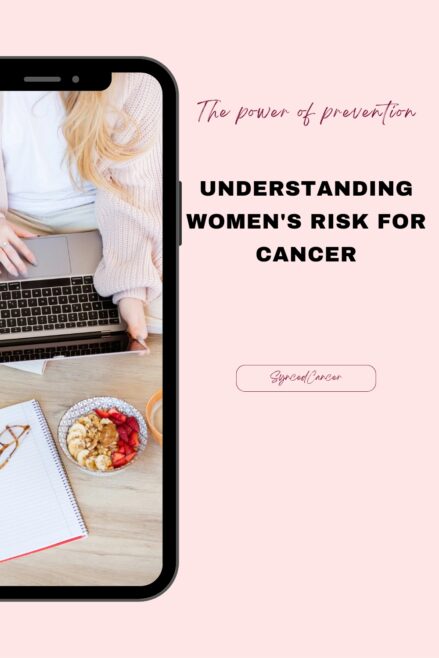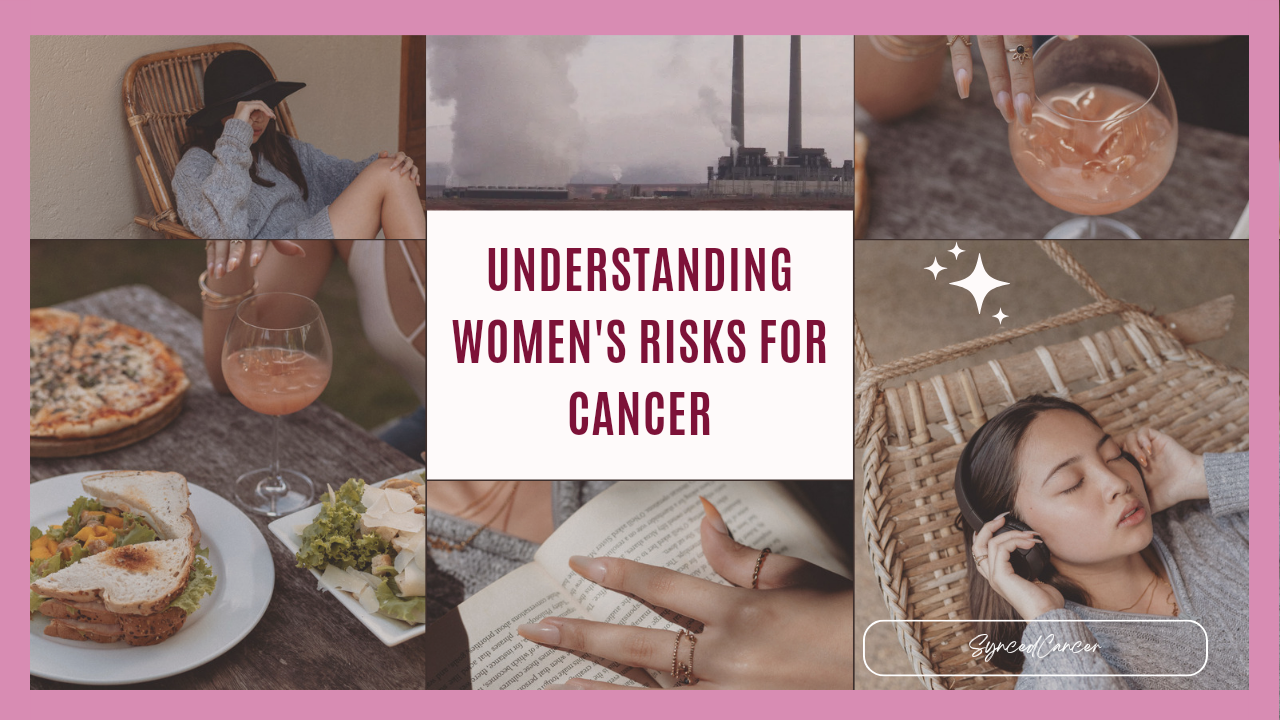The power of prevention: Understanding women's risk for cancer
Cancer, a formidable adversary of human health, knows no boundaries. It strikes regardless of age, gender, or ethnicity, presenting a formidable challenge to healthcare professionals and researchers worldwide. Within the intricate web of cancer’s multifactorial origins, understanding women’s risk for cancer emerges as a critical area of focus.
The landscape of women’s risk for cancer risk is vast and varied, influenced by a myriad of factors ranging from genetic predispositions to environmental exposures and lifestyle choices. By understanding your individual risk factors, you can take proactive steps to reduce your chances and empower yourself in the fight against cancer.
Why Prevention Matters
Regular screening and early detection are powerful weapons in the fight against cancer. For women, screening tests such as mammograms, Pap smears, and HPV tests can detect breast and cervical cancer in their early stages when treatment is most effective. However, wouldn’t it be even better to prevent cancer altogether? Many cancers affecting women, like breast and cervical cancer, have modifiable risk factors – meaning you have some control over your risk level. This blog post will equip you with the knowledge to discuss your risk with your doctor and make informed choices for a healthier you.

Categories of cancer risk factors in women
There are two main categories of cancer risk factors in women: modifiable and non-modifiable.
- Non-modifiable cancer risk factors in women are things you can’t change, like age and family history. The risk of most cancers increases with age. Having a close relative (mother, sister, daughter) with certain cancers, like breast or ovarian cancer, can also raise your risk.
- Genetic Predisposition: At the very core of cancer risk lie the genetic blueprints that govern our biological makeup. Women, like men, inherit a unique set of genes from their parents, some of which may harbor mutations predisposing them to cancer. BRCA1 and BRCA2 mutations, for instance, significantly elevate a woman’s risk of developing breast and ovarian cancer. Genetic counseling and testing play a pivotal role in identifying such high-risk individuals, enabling proactive measures to mitigate their susceptibility to cancer.
- Modifiable factors are the ones you have some control over. These include:
- Hormonal Influences: The intricate interplay between hormones and cancer risk adds another layer of complexity to the equation, particularly in cancers exclusive or more prevalent in women. Estrogen, a hormone central to female reproductive health, exerts profound effects on breast and ovarian tissues. Prolonged exposure to estrogen, either through early menarche, late menopause, or hormone replacement therapy, may escalate the risk of breast and ovarian cancer. Conversely, factors that reduce lifetime estrogen exposure, such as early childbirth and breastfeeding, may confer protective benefits.
- Lifestyle Choices: Beyond genetics and hormones, lifestyle choices wield considerable influence over a women’s risk for cancer. Tobacco use, for instance, stands as one of the potent cancer risk factors, including lung and cervical cancer. Conversely, adopting a healthy lifestyle characterized by regular physical activity, a balanced diet rich in fruits and vegetables, and limited alcohol consumption can exert protective effects against cancer development. Regular screening and early detection also play a pivotal role in identifying precancerous lesions or early-stage tumors when they are most amenable to treatment.
- Environmental Exposures: In an era marked by industrialization and urbanization, women face a myriad of environmental exposures that may impact their cancer risk. From air pollution and chemical contaminants to occupational hazards, the sources of environmental carcinogens are manifold. Understanding and mitigating these exposures through regulatory measures and public health interventions are crucial steps in safeguarding women’s health.
Importance of identifying risk factor in women cancer
- Tailored Prevention Strategies: One of the foremost reasons for understanding women’s risk for cancer lies in the ability to tailor prevention strategies to individual needs. Cancer is not a one-size-fits-all disease; rather, it manifests through a complex interplay of genetic predispositions, hormonal influences, lifestyle choices, and environmental exposures. By identifying and addressing specific cancer risk factors unique to women, such as BRCA mutations or hormonal imbalances, healthcare providers can develop personalized prevention plans aimed at mitigating these risks and promoting optimal health outcomes.
- Empowering Informed Decision-Making: Knowledge is power, particularly when it comes to managing one’s health and well-being. By educating women about cancer risk factors, we empower them to make informed decisions about their lifestyle choices, reproductive health, and healthcare options.
- Early Detection and Timely Intervention: Understanding women’s risk for cancer is instrumental in facilitating early detection and timely intervention, key pillars in the fight against this disease. Many cancers, including breast and cervical cancer, are highly treatable when detected at an early stage. Early intervention not only improves treatment outcomes but also reduces the emotional and financial burden associated with advanced-stage disease.
- Advancing Research and Innovation: A comprehensive understanding of cancer risk factors in women’s fuels ongoing research and innovation in the field of oncology. By elucidating the underlying mechanisms driving cancer development and progression, researchers can identify novel targets for intervention, develop more effective screening tools, and refine treatment strategies tailored to individual risk profiles.
- Equity in Healthcare Access: Lastly, understanding women’s risk for cancer is essential for promoting equity in healthcare access and outcomes. Women from marginalized communities or underserved populations may face unique barriers to accessing preventive services, screening programs, and specialized care. By recognizing and addressing the social determinants of health that contribute to disparities in cancer risk and outcomes, we can strive towards a more equitable healthcare system where all women have equal opportunities to protect themselves against cancer and receive timely, high-quality care.
It is important to note that having a cancer risk factor doesn’t mean you’ll develop cancer. It simply means you might need to be more vigilant:
Talk to your doctor: Discuss your family history and individual risk factors.
Embrace a healthy lifestyle: Prioritize a balanced diet, regular exercise, and maintaining a healthy weight.
Schedule regular checkups: Schedule regular checkups and discuss your individual risk factors. Early detection is critical.
Get Screened: Depending on your age and risk, screenings like mammograms and pap smears might be recommended.
Conclusion
In the intricate tapestry of cancer risk, women occupy a unique and multifaceted realm shaped by genetics, hormones, lifestyle choices, and environmental influences. By unraveling the complexities of this landscape and fostering a holistic approach to cancer early detection, we can empower women to take charge of their health and mitigate women’s risk for cancer.
Also, by taking preventative measures, you become an active participant in your health. Don’t be afraid to ask questions and advocate for yourself. With knowledge and proactive steps, you can significantly reduce your risk of cancer and live a long, healthy life. Together we can pave the way towards a future where the burden of cancer is alleviated, and women worldwide can thrive free from its shadow.
REFERENCES
Cancer.Net – https://www.cancer.net



What do you think?
It is nice to know your opinion. Leave a comment.